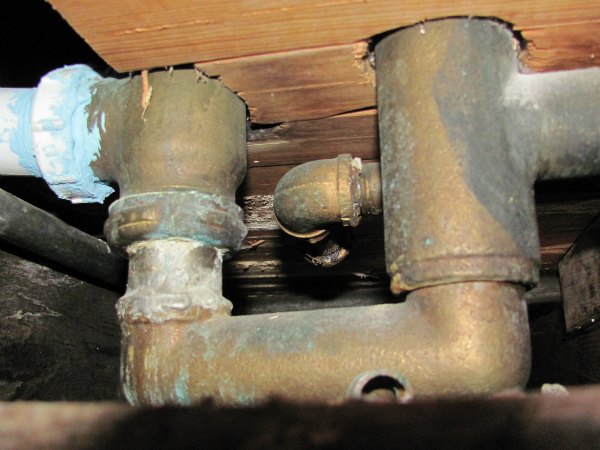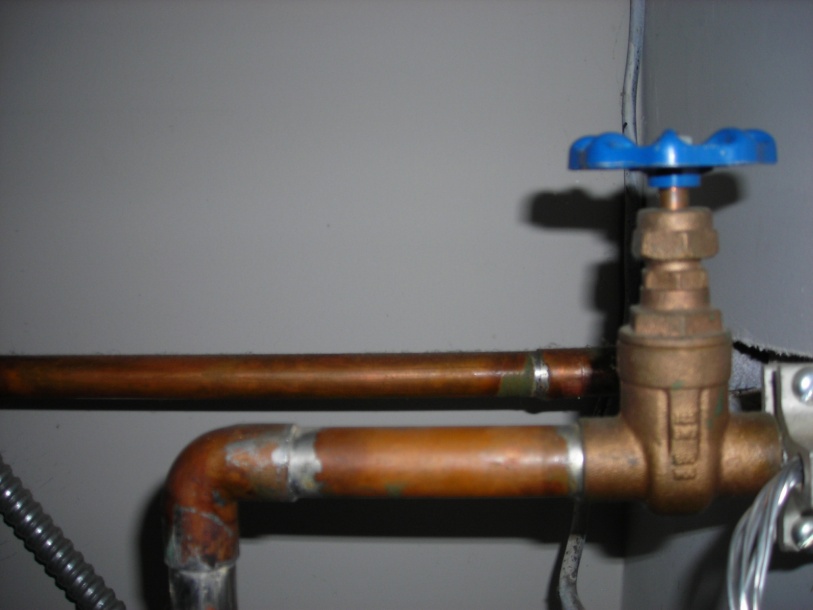Key Tips for Dealing with Plumbing in Older Homes
Key Tips for Dealing with Plumbing in Older Homes
Blog Article
Nearly everybody maintains his or her own assumption about Common Plumbing Challenges In Old Buildings.

Older homes frequently feature appeal, character, and background, but they can also bring a host of pipes problems. Whether you're dealing with maturing pipelines, low tide pressure, or leakages, recognizing how to resolve these typical troubles is crucial to maintaining a secure and functional home. In this overview, we'll check out the typical pipes obstacles dealt with by older homes and give useful solutions to keep your pipes in leading shape.
Recognizing Typical Pipes Problems
Aging Pipes
Among the most usual issues in older homes is maturing pipelines. Depending on the era in which your home was developed, the pipelines may be made from products that have actually weakened with time, such as galvanized steel, cast iron, or even lead. These products can rust, come to be fragile, or create leakages, resulting in water damage and potential carcinogen.
Low Water Stress
If you're experiencing low water stress, it could be due to mineral deposits, deterioration inside the pipes, or old fixtures that are no longer operating successfully. This can be a significant inconvenience, especially in locations like showers and sinks.
Dripping Pipelines
Leaks are one more constant issue in older homes, commonly caused by corroded or worn-out pipelines. Also little leakages can bring about substantial water damages, mold growth, and boosted water expenses otherwise addressed quickly.
Out-of-date Components
Obsolete pipes fixtures such as faucets, bathrooms, and showerheads not only look old however might additionally be much less efficient, prone to leaks, or incompatible with contemporary pipes requirements.
Pipeline Deterioration
Corrosion is an usual problem in older pipes, particularly those made from galvanized steel or cast iron. Corroded pipes can restrict water circulation, create staining, and at some point cause leakages or pipe bursts.
Examining the Problem of Your Pipes
Evaluating Visible Pipes
Start by inspecting any kind of noticeable pipelines in your house, such as those in cellars, crawl spaces, or under sinks. Seek indicators of deterioration, leakages, or rust, which can indicate underlying issues.
Checking for Leaks
Look for leakages by examining areas around taps, commodes, and under sinks. You can additionally check your water meter prior to and after a period of no water use to spot covert leaks.
Water Quality Screening
Older pipelines can impact the high quality of your water. Conduct a water quality examination to look for impurities such as lead, rust, or various other pollutants that may be introduced by maturing pipes.
Solutions for Typical Plumbing Concerns
Changing Aging Pipes
If your home has old, weakening pipes, take into consideration changing them with modern-day materials like copper or PEX. This can be a significant financial investment, yet it will avoid future issues and improve the safety and security and integrity of your plumbing system.
Fixing Low Water Stress
To deal with low tide pressure, beginning by cleaning or replacing old components and removing mineral build-up in the pipelines. If the issue lingers, it may be essential to replace areas of rusty pipelines.
Repairing and Replacing Leaking Pipelines
For little leaks, you can utilize pipe clamps or epoxy putty as a temporary repair. However, it's finest to change leaking pipelines entirely to stay clear of additional damages.
Upgrading Components
Upgrading old fixtures to modern, water-efficient versions can enhance your home's plumbing efficiency and reduce water usage. Seek components with the WaterSense label for the best performance.
Handling Pipeline Deterioration
If your pipes are worn away, replacing them with corrosion-resistant products like copper, PVC, or PEX is the most effective service. Routine inspections and water high quality upkeep can help stop better corrosion.
When to Call an Expert
While some pipes concerns can be managed with do it yourself solutions, there are times when it's finest to call a professional. If you're taking care of significant leaks, substantial deterioration, or are unsure about the problem of your pipelines, a licensed plumbing technician can offer experienced assessment and repair.
Preventive Maintenance Tips
Routine Assessments
Regularly examine your plumbing system for indications of deterioration. Capturing concerns early can protect against costly repairs down the line.
Water Stress Policy
Guarantee your water stress is within the advised array to stay clear of worrying your pipes and fixtures. A plumbing technician can set up a pressure regulator if needed.
Water High Quality Maintenance
Install water filters or softeners if your water quality is poor. This can protect your pipelines and components from damages brought on by tough water or pollutants.
Positive Pipe Replacement
If your home has older pipelines, take into consideration positive replacement prior to major problems emerge. This can conserve you from emergency situation repair services and water damage.
Final thought
Handling plumbing issues in older homes requires a mix of vigilance, preventative maintenance, and prompt upgrades. By recognizing the typical difficulties and recognizing when to seek professional help, you can ensure your plumbing system stays practical and trustworthy for many years ahead.
Common Plumbing Issues in Older Homes
Pipe corrosion
Pipe corrosion is a common plumbing issue in older homes. Several factors can cause pipes to corrode:
Water: Ironically, water is the number one cause of pipe corrosion. When water seeps into cracks in pipes, it can cause the metal to rust and break down, leading to leaks or even burst pipes.
Oxygen: Oxygen is another significant culprit in pipe corrosion. When oxygen interacts with water, it can cause the metal to oxidize and weaken.
Chemicals: Chemicals such as chlorine and fluoride can also contribute to pipe corrosion. These chemicals can react with the metal in pipes, causing them to break down over time.
Leaky pipes
Pipes that leak is one of the most common plumbing issues plaguing residents of older houses. While a small leak may not be a problem initially, it can lead to significant problems if left unaddressed. In addition, water damage can be very costly to repair and may cause damage to electric fixtures, promote mold growth and cause many other issues.
Worn-out fixtures
Older homes often have worn-out fixtures which may need replacement. Over time, the finishes on fixtures can wear down, exposing the underlying metal to corrosion. This can cause fixtures to leak or even break completely. It s best to have a professional plumbing contractor regularly inspect the fixtures in older homes and replaces them if necessary.
Faulty water heaters
A leaky water heater can cause severe damage to the home as it can be both a flood and fire hazard. Call a plumber immediately if it appears that the water heater might be leaking.
If the heater isn t working correctly, it could be because the pilot has gone out. The pilot light going out may indicate gas supply issues or leaks. It is also worth checking the thermostat to see if it needs to be adjusted.
If the water heater is making strange noises, it could be due to sediment buildup in the tank. Sediment can interfere with the heating elements and cause them to overheat. Overheating can damage the tank and shorten the lifespan of the water heater.
https://www.norfleetfamilyplumbing.com/blog/common-plumbing-issues-in-older-homes

We hope you enjoyed reading our part about Common Plumbing Challenges In Old Buildings. Thanks a lot for finding the time to read through our piece. Sharing is nice. Helping people is fun. Thanks a bunch for being here. Please come by our website back soon.
Click On This Link Report this page